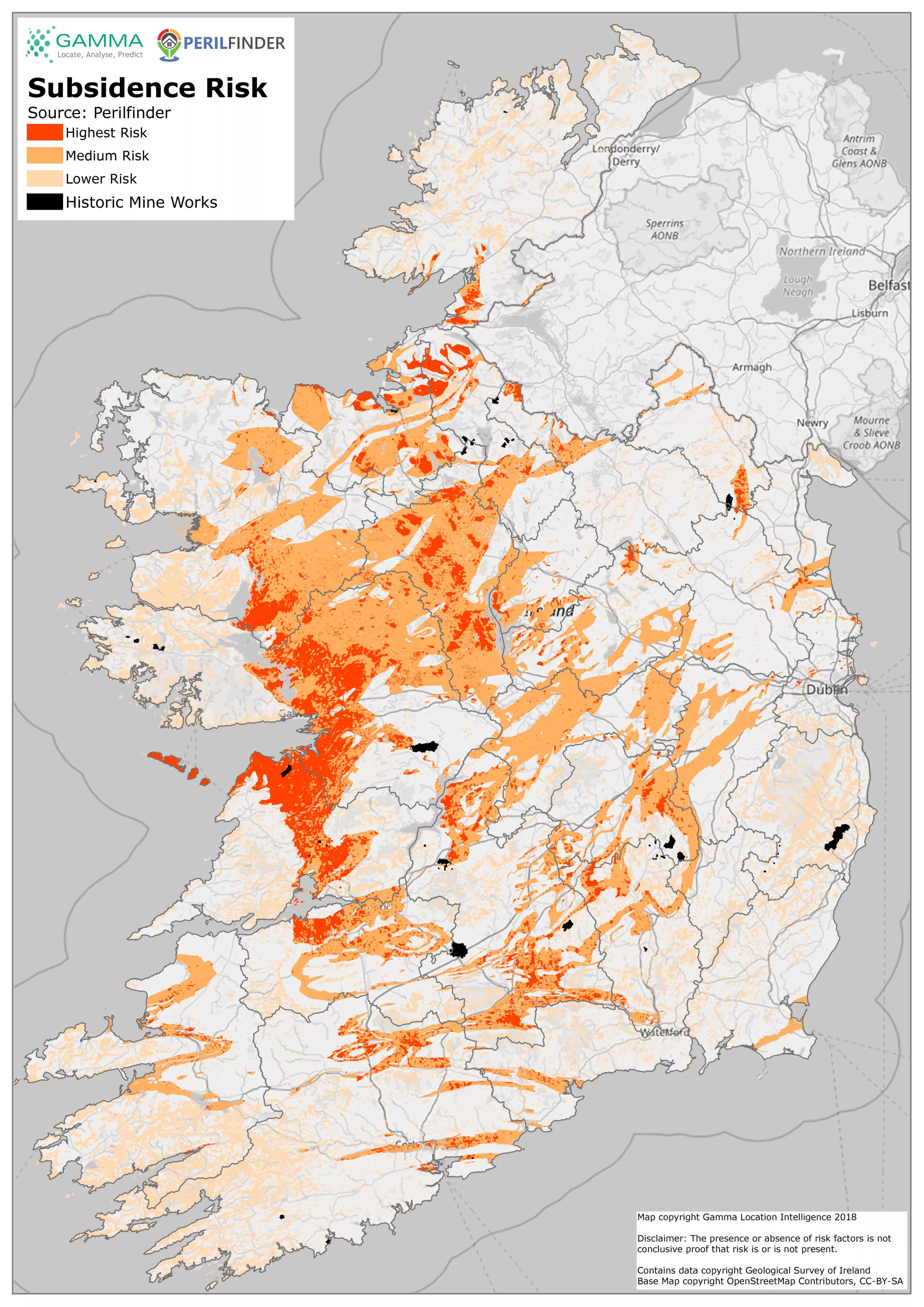Galway, Clare and Roscommon are the counties where sinkholes and subsidence are most likely to occur, a location intelligence software and services provider has found.
Using its risk assessment reporting tool, Perilfinder, Gamma has identified a number of areas across the country that are more exposed to subsidence events such as sinkholes.
Subsidence occurs when the earth’s surface ‘sinks’ unexpectedly and it can damage or destroy buildings, land and infrastructure.
Soil depth, soil type, rock type and historic underground structures can all have an effect on risk levels, while the extent of subsidence depends on underlying environmental factors and the design of building foundations.
Earlier this week, a GAA pitch in Co Monaghan was destroyed by a sinkhole and Gamma has since identified other areas that may be at risk.
The most vulnerable counties to subsidence are Galway, Clare and Roscommon, with each county having more than 15% of their total buildings falling within a high-risk zone.
On the other hand, Wexford and Wicklow have very few buildings located in high-risk subsidence areas and these are the least likely to be affected by subsidence.
Across Ireland, less than 5% of buildings, both commercial and residential, fall within areas predisposed to subsidence events.

Map by Gamma showing the areas most at risk from subsidence
Feargal O’Neill, CEO of Gamma, said: “Sinkholes are extreme cases of subsidence and they are rare in Ireland. However, the consequences can be devastating.
"Thankfully, the recent land collapse on a GAA pitch in Monaghan didn’t result in any injuries, however, the sports field was damaged, the school had to be evacuated and surrounding roads were closed.
"Situations like this can cause significant damage and people can end up seriously hurt.
“Subsidence is more common and it can affect all kinds of buildings, resulting in costly repairs.
"The key, therefore, is prevention. This curated Irish data can be used by organisations, including insurance companies and local authorities, to assess existing threats and lower the risk.”
Digital Desk






